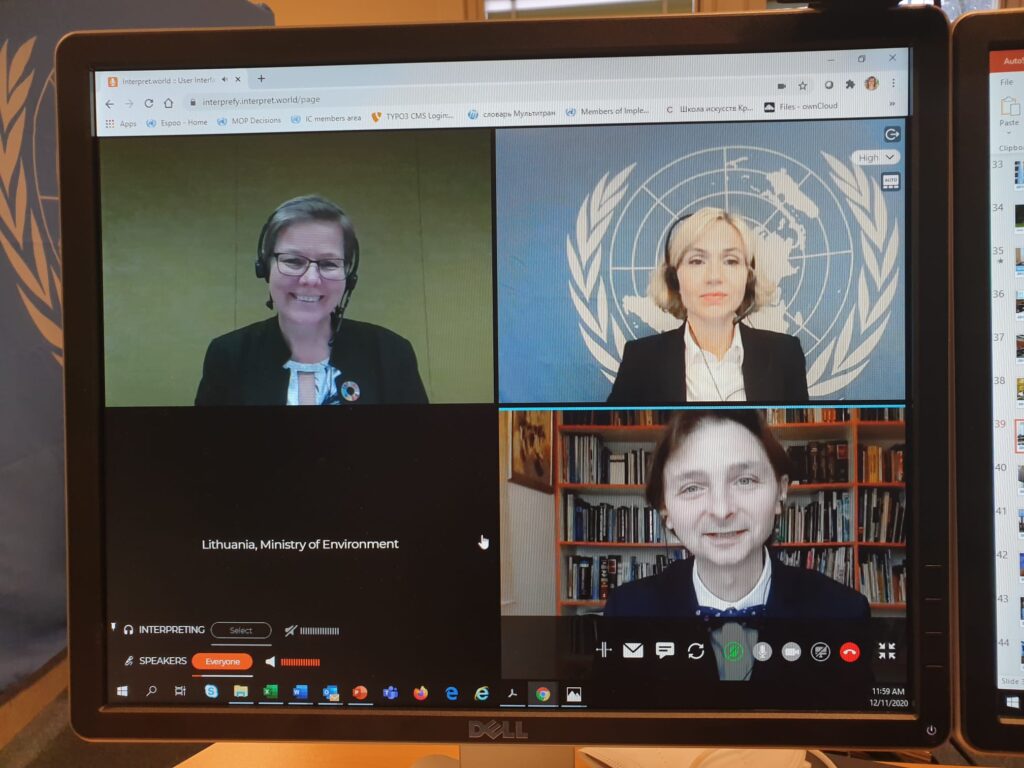On 11 December, Meeting of the Parties to the Espoo Convention* adopted new guidance on the applicability of the Convention to the lifetime extension of nuclear power plants. It aims to address the complex issues related to the procedure for assessing transboundary environmental impacts that arise during the extension of the lifetime of old power units.

Ukrainian activists, including Ecoclub and Resource & Analysis Center “Society and Environment”, were involved in the adoption of the Guidelines, which had been discussed for 3 years. In 2011, a complaint was filed with the Committee alleging non-compliance with Espoo agreements during the extension of the service life of the old power units of Rivne Nuclear Power Plant (units 1 and 2).

We asked Andrii Andrusevych, Senior Policy Expert at Resource & Analysis Center “Society and Environment”, about what had happened during these 9 years – from the time the complaint was filed to the adoption of guidance that should prevent dubious projects and negative consequences for people and the environment.
What exactly is this Espoo Convention and what does the decision of Meeting of the Parties to the Espoo Convention mean? How has this decision affected or will affect nuclear power plants?
The Espoo Convention is an international treaty that defines the obligation of states to assess the transboundary environmental impact of activities planned in their territory. The parties of the convention are more than 40 states in Europe, the Caucasus and Central Asia. This decision, in fact, establishes an additional scope of the convention – activities to extend the life of nuclear power plants.
With the adoption of new guidance, what will change in the decision-making procedures for extending the life of nuclear power plants? Can a decision to extend the life of a nuclear power plant be revoked if it is taken in violation of international agreements, in particular the Espoo Convention?
In my opinion, the main thing that will change is that the requirement for cross-border impact assessment will now apply not only to Ukraine (for which a special decision was made in 2014). In addition, it paves the way for all such cases that have been suspended in the Implementation Committee (a special body that monitors how states comply with the requirements of the Convention).
Do you remember what the main remarks of the public were before the extension of the 1 and 2 units of the Rivne NPP? How did the idea to address the Espoo Committee come about?
AA: As far as I remember, there were two such remarks: the first is the complete absence of public discussion in Ukraine on such an important issue, the second is the lack, in the opinion of the public, of adequate opportunities to express their reservations.
The idea arose at the request of Ecoclub to me, who were looking for ways to influence decisions on Rivne NPP 1,2 and other NPPs. At the time (end of 2010), this was a rather revolutionary idea: to justify that an environmental impact assessment (EIA) should be carried out in the process of extending the service life. We complained to the Committee for the Implementation of the Espoo Convention and, unexpectedly, we succeeded in convincing it. This was decided by the committee, and in 2014 – by Meeting of the Parties to the Convention (the highest body). After that, the idea of EIA in the service life extension process was actively picked up by anti-nuclear movements in the EU.
Has Ukrainian legislation changed or should it change after Ukraine was recognized as a violator of an international treaty? Should Ukraine do something else to avoid violating international environmental agreements?
AA: The nuclear sphere is the object of complicated and complex legal regulation in Ukraine. In my opinion, it is in the nuclear legislation that it is necessary to look for and implement opportunities for the integration of EIA in the decision-making process on the service life extension. So yes, change is needed. In general, Ukraine must be conscientious in fulfilling its obligations, this is the only advice.
Who can and should apply the guidance, will its use really increase the safety of obsolete nuclear units and does it involve public participation?
AA: I am convinced that the new guidance will help to increase the environmental safety of nuclear power plants. It must be applied by the states, and the public must monitor it.
To which international institutions and conventions can Ukrainians turn for protection in an effort to protect the environment from public or private companies-potential polluters?
AA: Today, most international agreements in the field of environmental protection have appropriate mechanisms to which the public can file complaints. Not all of them allow to “automatically” initiate the case, but they can be effective in influencing the state. Of course, the most important bodies in Europe are the Aarhus Convention, the Espoo Convention and the Protocol on Strategic Environmental Assessment, the Berne Convention. It is clear that the most influential is the European Court of Human Rights, which has a significant case law on environmental cases and is currently dealing with an interesting case on climate change.
Today in the region with which the UNECE (United Nations Economic Commission for Europe) works – and it is 56 countries in Europe, North America (Canada and the United States), the Caucasus (Armenia, Azerbaijan, Georgia), Central Asia , Kyrgyzstan, Tajikistan, Turkmenistan and Uzbekistan) and Western Asia (Israel) – more than 100 reactors over 40 years old. In the next 10 years, their fate will be decided – the service life will be extended or stopped.
The adopted guidance if used by the public can significantly influence these processes.
* The Espoo Convention is an international treaty that obliges states to conduct an environmental impact assessment of commercial projects in the event that such projects may affect the environment of another state. Full name – Convention on Environmental Impact Assessment in a Transboundary Context. It was signed in Espoo (Finland) in 1991.










